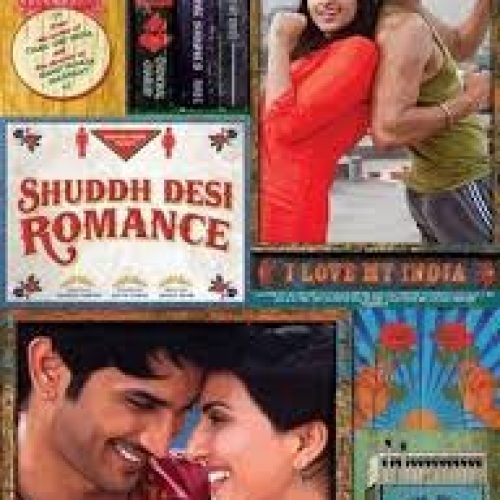It’s not every day that a quiet high school student becomes the voice of a feminist revolution, but that’s exactly what happens in Moxie. Directed by Amy Poehler, this teen drama stars Hadley Robinson, Lauren Tsai, Alycia Pascual-Peña, and Patrick Schwarzenegger in a high school setting in modern-day suburban America. Based on the novel by Jennifer Mathieu, the film fits squarely into the genre of coming-of-age teen dramas, but with a sharp feminist twist. It tackles themes of empowerment, sexism, and resistance in a relatable and inspiring way, making it relevant for today’s socially-conscious audience.
The plot follows Vivian, a shy 16-year-old girl who has spent most of her high school life blending into the background. However, when a new student, Lucy, challenges the sexist culture at their school, Vivian begins to notice the rampant inequalities around her—everything from casual harassment to blatant favoritism of the football team. Inspired by her mother’s rebellious youth, Vivian anonymously creates a feminist zine called Moxie, which sparks a movement at her school. As her classmates rally around the magazine’s message of resistance, the zine becomes a symbol of protest against the systemic issues plaguing their high school. The film then follows the ripple effects of this newfound activism, as the students band together to challenge the status quo while also navigating the complex dynamics of friendship, identity, and romance.
One of the strongest aspects of Moxie is the central performance by Hadley as Vivian. She convincingly portrays a teenager in transition—starting out timid and withdrawn, and gradually finding her voice as she grows into her newfound role as a rebel leader. Her portrayal feels grounded and authentic, particularly in the quieter moments where her character grapples with the pressure of leading a movement while still figuring out who she is. Lauren, as Lucy, is another standout, bringing strength and resilience to her role as the unapologetic new girl who refuses to stay silent in the face of injustice. The chemistry between the two leads is believable and sets the tone for the group dynamics that unfold as the story progresses.
Amy Poehler, who also plays Vivian’s mom, delivers a solid performance while wearing the director’s hat with ease. Her direction balances the film’s heavier themes of sexism, harassment, and power imbalances with moments of lightness and humor. She gives space for each character to shine, allowing the ensemble cast to explore their arcs without overburdening the narrative. Poehler’s ability to infuse the film with a sense of fun without undermining its core message of feminism is a testament to her skill. There’s a particularly effective scene early on where Vivian discovers her mother’s punk-rock past, which cleverly sets the stage for the zine’s rebellious tone. The direction also ensures that Moxie avoids becoming overly preachy or self-righteous—an important feat given its social justice themes.
The film’s cinematography by Tom Magill helps enhance the high school atmosphere without overshadowing the characters. Bright, warm tones dominate the screen, giving the movie a visually inviting appeal. The framing of certain scenes, especially those involving the protest actions organized by the students, effectively captures the spirit of youthful activism. One sequence, where the students silently rebel by wearing tank tops to challenge their school’s sexist dress code, is shot in a way that amplifies the collective power of the protest, making the audience feel part of the movement. The camera work complements the tone of the film, maintaining a balance between the emotional beats and the lighter, more energetic moments.
The soundtrack plays an important role in setting the film’s rebellious tone. The punk-rock anthems, which include tracks from Bikini Kill and other feminist icons, fuel the spirit of resistance and fit seamlessly into the story. The music not only reflects the mood of the characters, particularly Vivian’s transformation, but also serves as a bridge between generations—highlighting the shared struggles of women fighting against patriarchal structures. The song choices are empowering, reinforcing the film’s themes of solidarity and change. In fact, the moment when Vivian first hears Bikini Kill’s “Rebel Girl” serves as a catalyst for her decision to start the zine, and the music continues to play a vital role in key turning points throughout the film.
The editing by Julie Monroe is smooth and keeps the pacing brisk, which works well for a film aimed at younger audiences. The scenes transition seamlessly, ensuring that the film never drags, even during the more introspective moments. The choice to intercut between the chaos of the protests and the personal struggles of the characters adds to the narrative tension, especially as the stakes get higher. However, there are moments where the film could have benefitted from lingering a little longer on some of the more emotional beats, particularly in the relationships between the main characters.
Another commendable element is the film’s focus on intersectional feminism. It highlights how different forms of oppression—race, gender, class—intersect in the characters’ lives. Lucy, as a woman of color, faces additional challenges beyond what Vivian experiences, and the film does a good job of acknowledging these differences. The ensemble cast also includes characters from diverse backgrounds, making the message of inclusivity central to the film’s overall theme. While the film sometimes struggles to fully explore each character’s story, it makes an earnest attempt to address the complexities of feminist solidarity.
Overall, Moxie is a refreshing take on the teen coming-of-age genre, offering a thoughtful commentary on sexism and activism within a high school setting. While it may not delve deeply into the more nuanced aspects of feminist discourse, it effectively sparks a conversation about how young people can challenge outdated norms and fight for equality. The performances are engaging, particularly Hadley’s portrayal of a teenager on the verge of self-discovery, and Amy’s direction ensures that the film remains both entertaining and meaningful. While some might find the film’s treatment of its themes a bit simplistic, it’s clear that Moxie is aimed at a younger audience, making it an ideal starting point for teens exploring feminism and activism.
If you’re looking for a movie that mixes humor, heart, and a bit of rebellion, this one is worth a watch. It’s not just a film about fighting injustice—it’s about finding your voice, supporting your friends, and standing up for what’s right. Moxie may not break new ground in its genre, but it offers a hopeful message that activism can start at any age, and sometimes, all it takes is a little courage to make a big difference.







